Fairs & Festivals of Goa
“Go Go Goa….!!”
The lavish lifestyle of Goa supports fun and celebration throughout the year. The Goan calendar is marked by several feast days. Goa’s Christian heritage is reflected in the number of feast days and festivals that follow the religious calendar. Besides such religious festivals, Goa is also known for its arts and crafts fairs, and food festivals. Some of the festivals & Events in Goa are
Goa Carnival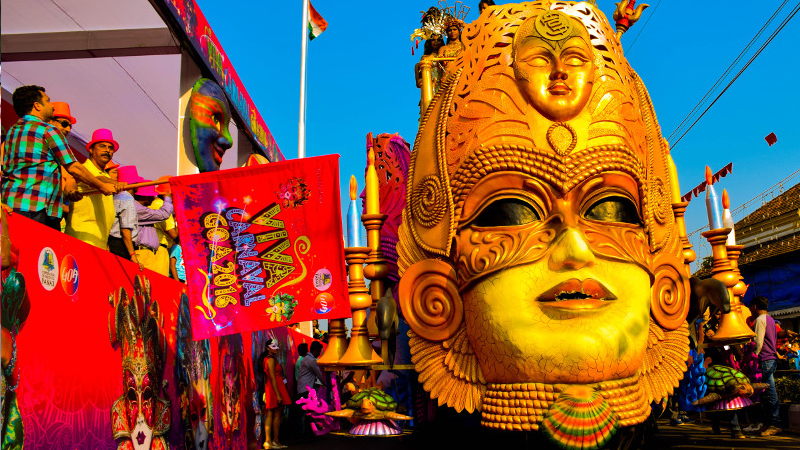
Come February and Goa is all bustling with activity. A three day Goa carnival is what hooks everyone for this is something Goans await anxiously the entire year. Such celebration is unknown in any other part of the country and with time the Goa carnival has become not just a delight to Goans but a major tourist attraction as well.
Though, essentially a Christian festival, with passing of age all communities have begun to participate in this carnival. Preparations start much in advance for three day non stop fun and excitement. And once it starts, all Goans do and think is music, dance and merrymaking. The fun, the frolic, the soothing climate – few can resist of not being a part of it. Old and young, kids and adults, everyone gets into this party mood.
History of Goa carnival
Goa carnival is a legacy of Portuguese which is preserved till date. During the last few years of Portuguese rule, there was a decline in the popularity of the festival and of late too it had become more of a commercial activity. But with massive campaigning against the rampant commercialization by the church authorities, the carnival redeemed its original form again. Goa carnival was introduced by its erstwhile rulers. It reinforced the fun loving culture of Goa. A king of chaos called “Momo” is chosen and he presides over the three day activity.
Earlier carnival was in a more rustic and rowdy form. Flour, eggs, oranges, lemons, mud, sand-filled gloves along with dirty water, various liquids and glue were targeted at the passer bys. People used to throw old pans, pots, and other kitchen utensils out of the windows as a symbolic gesture to discard the old and dirty before the Lenten fast. Even more funny was the battleground scene where the weapons were plaster-of-Paris eggs, wax lemons, corncobs and beans. These blows were reciprocated with brooms and wooden spoons. Endless lavish feasts, cakes and pastries being distributed by convents, people used to gorge on food for three days. Preparations for this three day riot of colours,, food and fun used to begin much in advance, sometimes as long as three months. This was the Goan carnival in its true blue colours. Today though many rituals have dropped and many modified but tthe spirit of the carnival still reins in its true essence.
The Carnival Today
Preparations for three days of enjoyment, enjoyment and enjoyment begin at least three months in advance. There is so much to be done. While those who perform during the carnival rehearse for the plays to be enacted. The song and dance performances are composed and choreographed by Goans themselves. The plays at times enact some instances from the Goan history. The characters are enacted by men only, even the roles of women! The dresses are very colorful and bright . The headgears so unique that they will capture your fancy at once. Boys and girls start preparing by designing their costumes. Not just the costumes, they also have to prepare for the mock battle. They fill packets and cartridges made of paper with bran, husk or sawdust or plain powder to use in the mock battles. All geared up, by the eve of the carnival, the excitement runs so high in the blood that anyone can barely sleep at night.
Once the carnival begins, Goa is in a different mood altogether. There is a riot of colours on the street when the procession comes in its true form, all geared up with sparkling floats and troupes of masked revelers. It comes into form with King Momo leading the parade and in full command of his public. The next three days are marked by celebration of the Goan culture. There are competitions and functions with the winners being given prizes by the king. Adding to the colors are the colours people smear on each others faces with as a part of the fun. (Earlier they used flour and eggs instead )
All the Goa is a party zone, girls flaunting frills and boys their cowboy hats. Then there are people wearing masks resembling nursery rhyme characters as well as cartoons. These attractive masks fascinate children especially. Each music band gets an audience that is fully into merrymaking. Flamboyance in everything, that’s the keyword.
Fireworks, fortune tellers, children forming their own musical orchestra by banging on anything they find (from tins to drums), elder ones in funny costumes, these are just few scenes you will spot. To put to words the entire carnival is difficult, you have to see it to feel the buzz in the air. A play cum dance song of Mussol is a special attraction. The icing on the cake is the Red-and-Black dance organized on the final day by the Club National in Panjim
One thing that never stops during three days of galore is the music. Infact there is so much of music that another name of the Goan Carnival could be the musical extravaganza. A chance to make mockery of the establishment is not lost during the carnival as people come up with street plays, live bands, and a more than just enthusiastic audience, you can’t ask for more.
Though for the Christians, the carnival is of religious importance since it marks the beginning of the forty day period of lent, but the religious undertone is missed in the spirit of carnival. Goa carnival is today a celebration and symbol of Goa culture which attracts tourists from India as well as abroad.
Feast of Three Kings 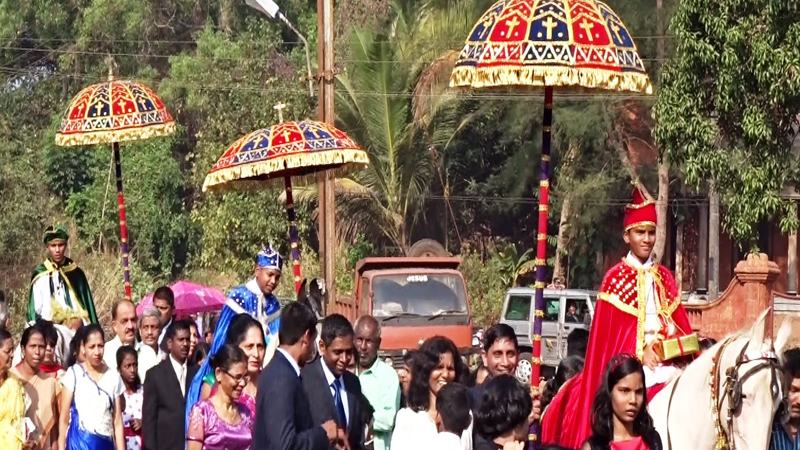
In the Feast of Three Kings, at churches local boys re-enact the story of the three kings bearing gifts for Christ. The Lady of the Mount is famous for her wondrous protection and miracles and is also reputed to be the giver of children to sterile mothers. High mass is offered on the day of Epiphany and it is a time to rejoice and partying. The tolling bells call the faithful to prayer and devotees visit the shrine in a non-stop stream. Many come to offer their thanks for fulfilling their wishes. The devotees always lead by a drummer-boy with his kettledrum who, by the loud beat of his drum, announces of another favor having being granted by the Lady of Remedios.
Shigmotsav Coming in the month of March,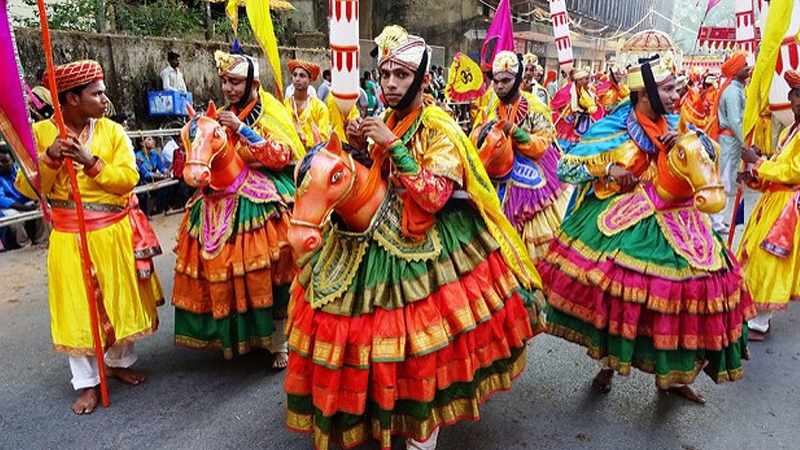
Shigmotsav is the Goa’s version of the Hindu spring festival Holi. Colored water and colors are thrown around at everyone. The parades of colorful floats with mythological themes are taken out in all major towns.
It is a festival to rejoice and a symbol to fill your life with many colors.
Sabado Gordo
Sabado Gordo is a part of the Goa carnival which is held in the month of March all over Goa. This festival is held on the Saturday before Lent. It’s celebrated by a procession of floats and raucous street partying.
Good Friday / Easter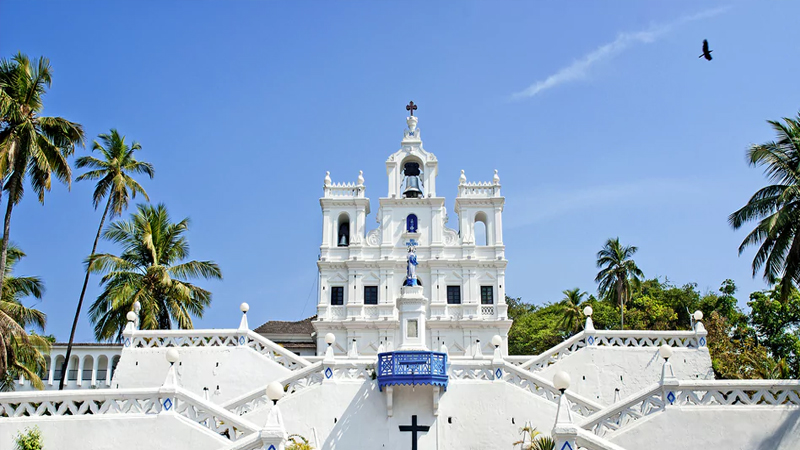
Good Friday is a day of sincere reverence among Goan Catholics. It is the culmination of Lent, an important observance in the lives of devout Catholics. Lent is observed for forty days from February to March, beginning with Ash Wednesday and ending on Good Friday followed by Easter Sunday. On Good Friday, a cross, symbolic of the one on which Jesus was crucified, is unveiled in many churches. It is believed that Jesus rose from his grave on the following Sunday, which is celebrated as Easter. The rituals for Good Friday begin on the preceding Thursday. A feast symbolizing the last supper of Christ is held on Thursday night. The end of this meal marks the beginning of the fast for Easter. After the mass, the crucifix, which until this time has been kept from view, is now uncovered before the crowd for veneration.
Procession of All Saints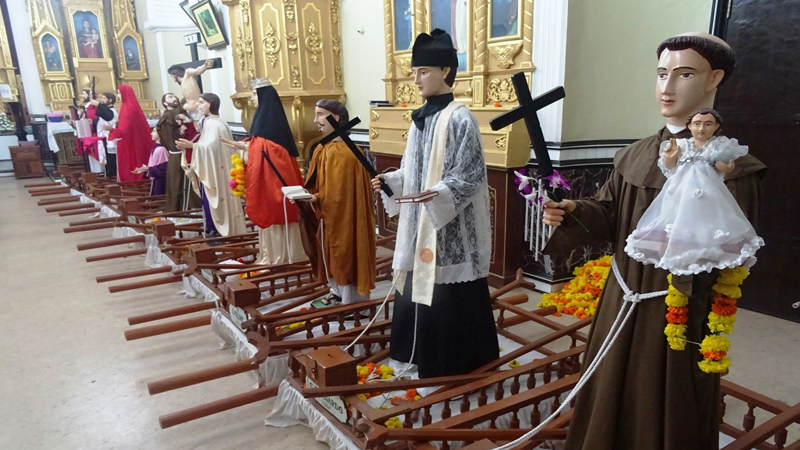
On the Monday after the 5th Sunday in Lent i.e. in the month of March or April, there is a procession in which all 30 statues of the saints from St Andrew’s are brought out from storage and paraded around Old Goa’s neighboring village. This dates from the 17th century and is the only procession of its kind outside Rome. It is accompanied by a large fair where old fashioned hand held fans, a local handicrafts, are sold. Also actors and musicians perform in villages.
Feast of Our Lady of Miracles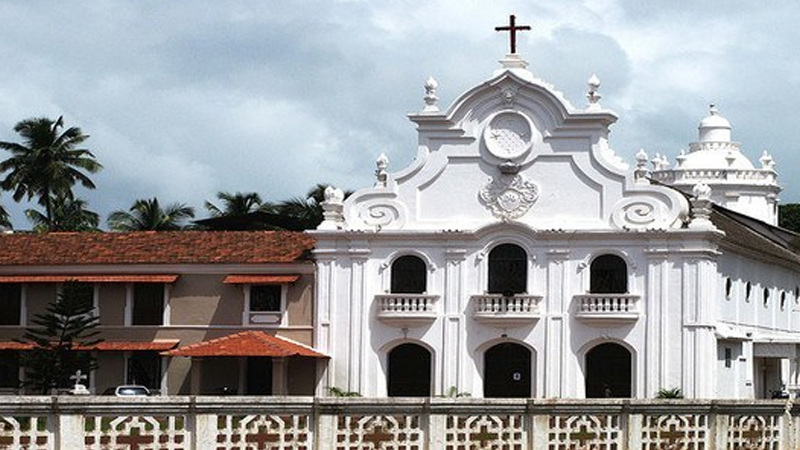
Feast of Our Lady of Miracles is held on the nearest Sunday, 16 days after Easter. On this day, a huge fair and market is held at Mapusa. This festival is secular by nature and is celebrated with pomp and show by Christians. This festival is also celebrated by Hindus in honor of the Goddess Lairaya.
Beach Bonanza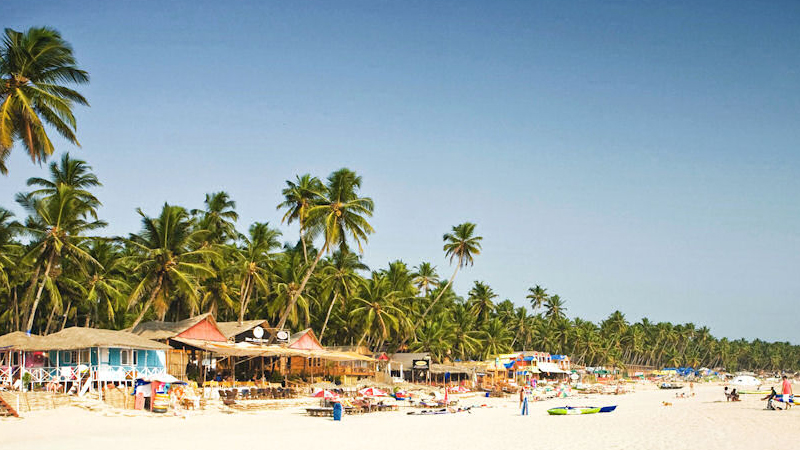
Several food and entertainment festivals, known as ‘Beach Bonanzas’, are held at various beach towns.
Igitun Chalne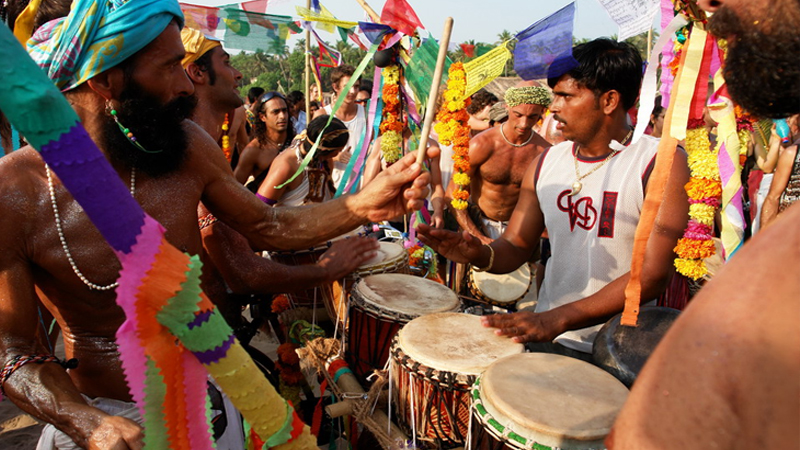
Held at Sirigao Temple in Bicholim province, this fire-walking festival is one of Goa’s most distinctive events. The high point is when devotees of the goddess Lairaya walk across burning coals to prove their devotion.
Feast of St. Anthony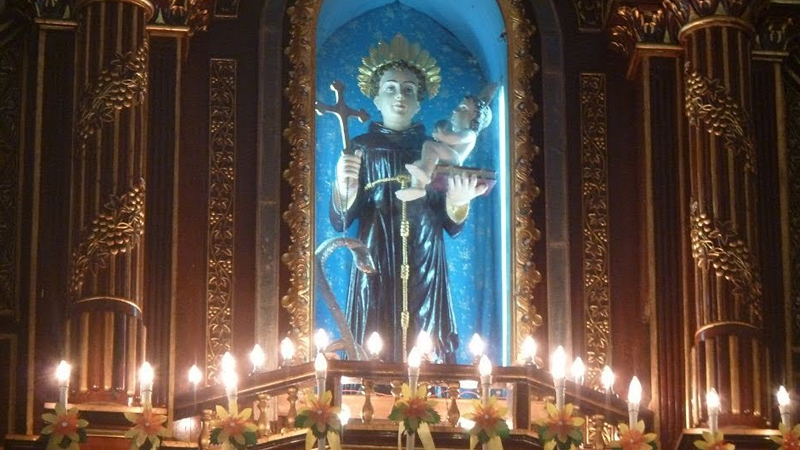
Feast of St. Anthony marks the beginning of monsoon. Songs are sung in honor of the saint requesting the gift of rain. It is said that if the monsoon has not arrived by the time of this feast day, a statue of the saint should be lowered into the family well to hasten the arrival of the rain.
Feast of St. Peter and St. Paul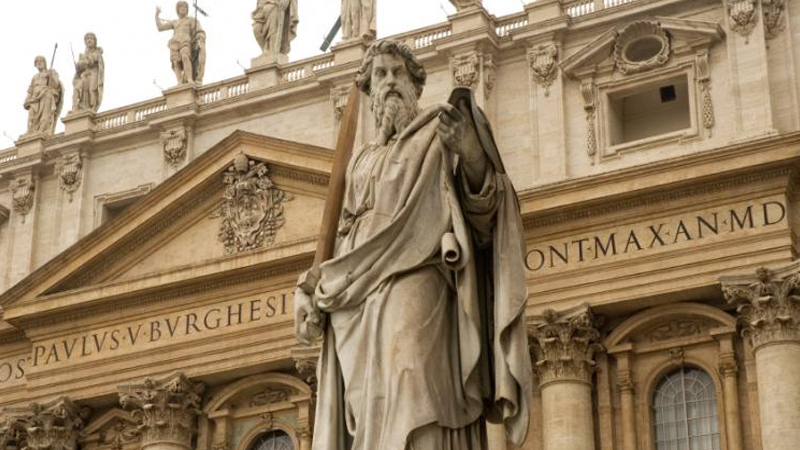
Feast of St. Peter and St. Paul is another monsoon festival, celebrated by the fishing community, particularly in the region of Bardez, between Panaji and Mapusa. A floating stage is erected on fishing boats tied together and a pageant is held as they float downstream. Dance, drama and music performances are held on makeshift stages floating on river.
Feast of St. Lawrence
Feast of St. Lawrence is held on 10 August, all over Goa. This feast celebrates the reopening of the sandbars in the Mandovi river to river traffic and the end of the monsoon.
Harvest Festival of Novidade
In the Harvest Festival of Novidade, the first sheaves of rice are offered to the priests on the 21st August and to the Governor and Archbishop and placed in the Cathedral on the 24th August. The festival includes a re-enactment of one of the battles between Alburquerque and the Adil Shah on the lawns of the lieutenant Governor’s Palace.
Fama de Menino Jesus
Fama de Menino Jesus is the Colva’s biggest feast day when the menino Jesus (a statue of the infant Jesus said to perform miracles) is paraded.
Goa Heritage Festival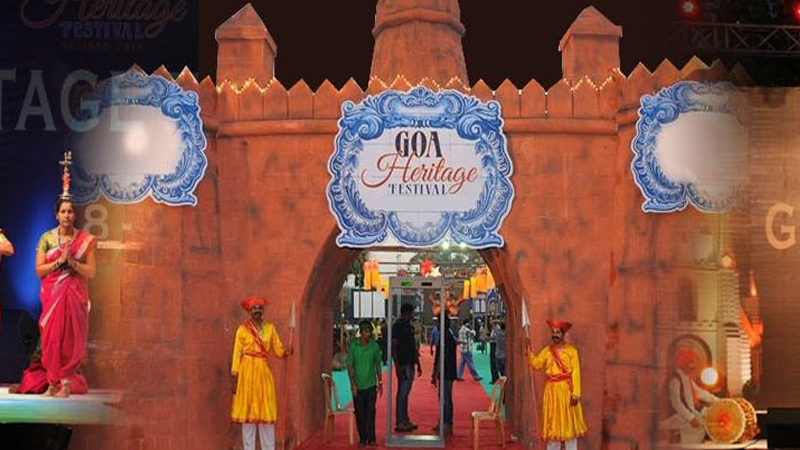
Goa Heritage Festival is a two-day cultural event held at Campal in the month of November in Panaji, Goa. This festival features music, dancing and traditional food.
Tiatr Festival
Tiatr Festival is another drama-arts programme held as a competition at the Kala Academy in the month of November in Panaji.
International Film Festival of India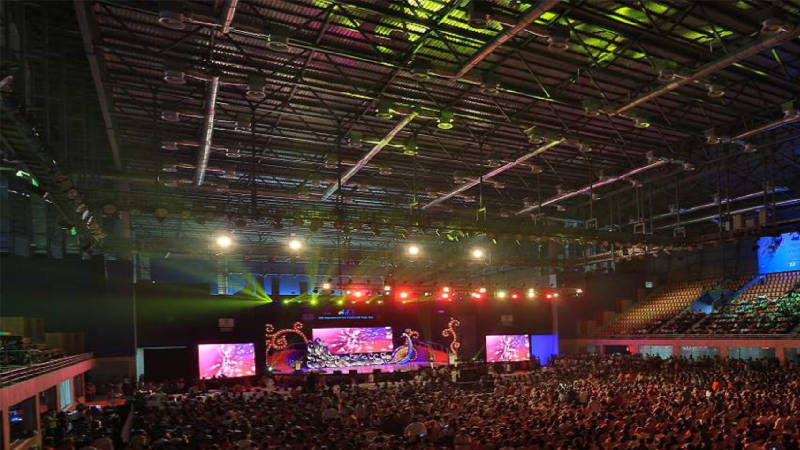
International Film Festival of India is held normally for 10 days from the last week of November in Panji. This festival is held in Goa since 2004. This is the largest film festival in India and features numerous exciting art-house films from across the world.
Konkani Drama Festival
Konkani Drama Festival is a programme of Konkani music, dance and theatre held at the Kala Academy. It is a competition, with prizes awarded to the best performing group at the end.
Feast of St. Francis Xavier
Feast of St. Francis Xavier is the Old Goa’s biggest festival, preceded by a 10-day Novena. There are lots of festivities and huge crowds during this period, especially for the Exposition of St Francis Xavier’s body, which is held once every 10 years.
Feast of our Lady of the Immaculate Conception
A large fair and a church service is held at the Church of Our Lady of the Immaculate Conception on the 8th December in Panaji. Around the same time, Margao celebrates with a large fair.
Plan the time of your Goa vacation in such a way that you can witness and enjoy some of the fascinating feasts of Goa. Tour the different venues of this festival to get closer to the culture of this superb destination.

